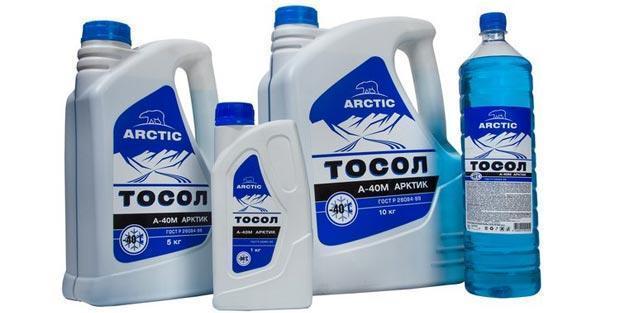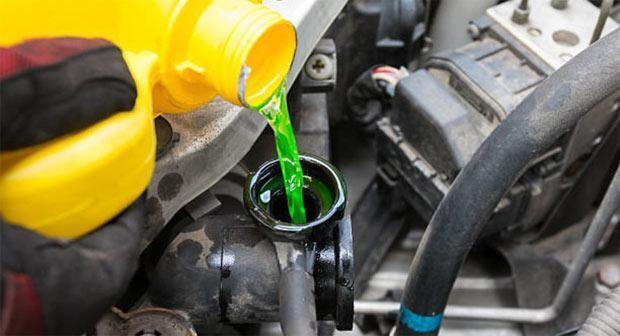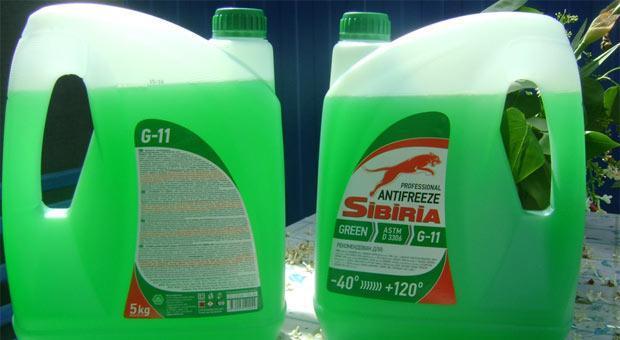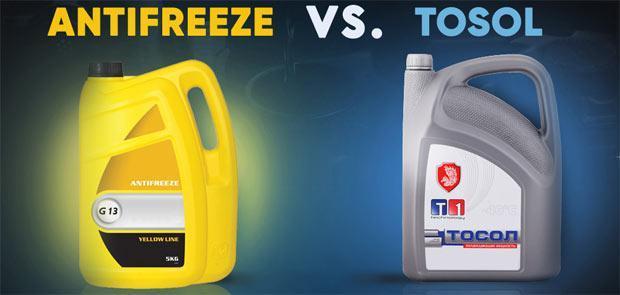
What is the difference between antifreeze and antifreeze?
Content
The meaning behind the name
Let's start with the fact that the name "antifreeze" stands for "coolant". If translated literally, then anti - “against”, freeze - “cold, freeze”.
Antifreeze is a coined name that was given in the late 1960s to a newly developed domestic coolant. The first three letters (“tos”) stand for “organic synthesis technology”. And the ending (“ol”) is taken based on the generally accepted chemical nomenclature used to designate alcohols (ethanol, butanol, etc.). According to another version, the ending is taken from the abbreviation "separate laboratory", and it was assigned in honor of the product developers.
That is, antifreeze is not the commercial name of a brand, and not even a certain group of coolants. In fact, this is a common name for all coolants. Including antifreeze. However, in the circles of motorists, it is customary to distinguish between domestic and foreign liquids as follows: antifreeze - domestic, antifreeze - foreign. Although technically it is wrong.


Antifreeze and antifreeze G11
The vast majority of modern coolants are made from three main components:
- ethylene glycol (or propylene glycol for more expensive and technological liquids);
- distilled water;
- additives.
Looking ahead, we note: antifreeze and antifreeze G11 are almost identical products. The proportions of ethylene glycol and water depend on the temperature at which the liquid freezes. But in general, for antifreeze and G11 antifreeze, this proportion is approximately 50/50 (for the most common variations of these coolants that can operate at temperatures down to -40 ° C).
The additives used in both fluids are inorganic in nature. These are mainly various borates, phosphates, nitrates and silicates. There are no standards that limit the proportions of additives and the exact chemical formulas of the components. There are only general requirements that the finished product must meet (the level of protection of parts of the cooling system, the intensity of heat removal, safety for humans and the environment).


Ethylene glycol is chemically aggressive to both metals and rubber and plastic parts of the system. Aggression is not pronounced, however, in the long term, dihydric alcohols can destroy pipes, radiator cells and even a cooling jacket.
Antifreeze additives G11 and antifreeze create a protective film on all surfaces of the cooling system, which significantly reduces the aggression of ethylene glycol. But this film partially prevents heat dissipation. Therefore, G11 antifreeze and antifreeze are not used for "hot" motors. Also, antifreeze has a slightly shorter service life than all antifreezes in general. If it is desirable to change the antifreeze after 2-3 years (depending on the intensity of operation of the car), then the antifreeze guarantees the performance of its functions for 3 years.


Antifreeze and antifreeze G12, G12+ and G12++
G12 antifreeze base (G12+ and G12++) also consists of a mixture of ethylene glycol and water. The differences lie in the composition of the additives.
For G12 antifreeze, so-called organic additives are already used (based on carboxylic acid). The principle of operation of such an additive is based on the local formation of an insulating layer on a site damaged by corrosion. That is, that part of the system in which a surface defect appears is closed by carboxylic acid compounds. The intensity of exposure to ethylene glycol decreases, and the destructive processes slow down.
In parallel with this, carboxylic acid does not affect heat transfer. We can say that in terms of heat removal efficiency, G12 antifreeze will perform better than antifreeze.


Modified versions of G12+ and G12++ coolants contain both organic and inorganic additives. At the same time, organic ones predominate. The protective layer that is created by borates, silicates and other compounds is thin, and it practically does not interfere with heat transfer. And organic compounds, if necessary, block the damaged areas of the cooling system and prevent the development of corrosion centers.
Also, class G12 antifreezes and its derivatives have a much longer service life, about 2 times. However, the cost of these antifreezes is 2-5 times higher than that of antifreeze.


Antifreeze G13
G13 antifreezes use propylene glycol as the base. This alcohol is more expensive to produce, but it is less aggressive and not so toxic to humans and the environment. The appearance of this coolant is a trend of Western standards. Over the past few decades, in almost all areas of the Western automotive industry, there has been a desire to improve the environment.
G13 additives are similar in composition to G12+ and G12++ antifreezes. Service life is about 5 years.
That is, in terms of all operational properties, antifreeze hopelessly loses to foreign coolants G12 +, G12 ++ and G13. However, the price of antifreeze in comparison with G13 antifreeze is about 8-10 times lower. And for simple cars with relatively cold engines, it makes no sense to take such an expensive coolant. Ordinary antifreeze or antifreeze G11 is enough. Just do not forget to change the coolant in time, and there will be no problems with overheating.


Watch this video on YouTube
